New Frontiers in the Treatment of Chronic Pain, Part 2, Healing Practices
(The video provides a brief overview; read the article below for a more in-depth understanding.)
In Part 1 of this series, I explored the new understanding of pain that has emerged from breakthroughs in neuroscience. Now, in Part 2, we explore the practical application of this science through easy-to-understand daily practices that can enhance your vitality and alleviate suffering. Join me on this journey as we uncover powerful techniques for adjusting your unconscious sensory system to support your health.
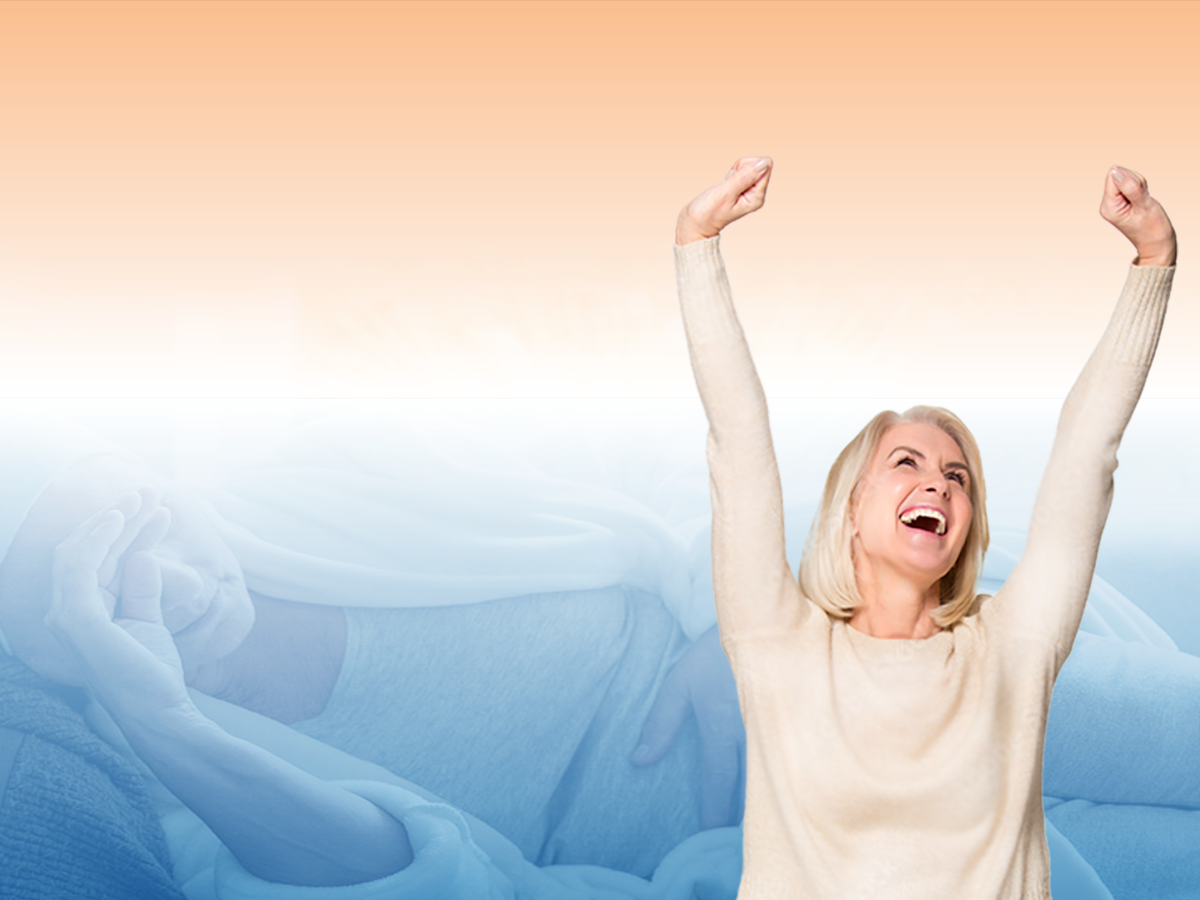
Healing Practices Help Bring You Back to Life
Cold Truths: Lessons from Wim Hof
Imagine immersing yourself in ice-cold water, a scenario that might initially evoke thoughts of pain and discomfort. However, according to the emerging pain equals unconscious interpretation of damage model in neuroscience, our assumption that everyone will experience the same level of pain or discomfort in such situations is flawed. To illustrate this, let’s turn our attention to Wim Hof, a Dutch ultra-athlete and world record holder known for his ability to endure extreme cold.
Wim Hof has not only set multiple world records by subjecting himself to intense cold exposure but also trains others to acclimate to cold as a means to combat stress-related disorders, including anxiety, depression, hypertension, autoimmune diseases, and even post-traumatic stress disorder (PTSD). His teachings revolve around cultivating calmness in the face of adversity.
While the man in the ice water on the right appears overwhelmed by the cold exposure, Wim Hof remains remarkably calm. This stability may seem superhuman, but it is simply the result of incremental training over time. To heal chronic conditions, one must practice expanding your tolerance to distressing situations through incremental training. This training can rewire your unconscious responses to people and situations that perpetuate chronic stress in your body—the very stress that drives autoimmune issues, chronic pain, and illness.
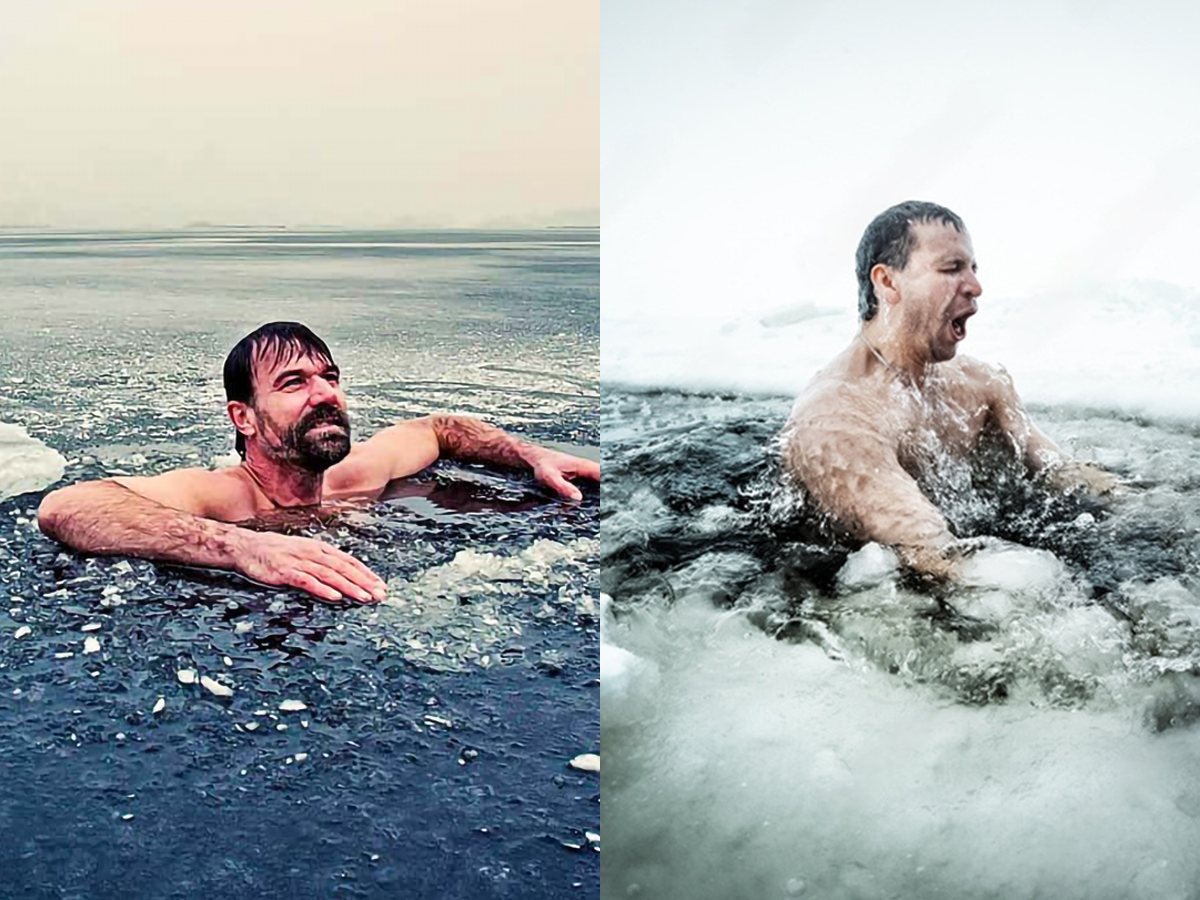
Incremental Training Has Made Wim Hof on the Left More Stress Resilient Than the Man on The Right
My Personal Experience: Ice Baths and Transformation
I have practiced the Wim Hof method: breathwork, physical exercises, and regular ice baths for over two years. The ice baths are typically around 37 degrees Fahrenheit (about 3 degrees Celsius), and I soak in the bath for 10 minutes or do intervals of three minutes, three times in a row. Yes, those are ice cubes on my stomach and surrounding me in the water. But, as you can see, despite the adversity, I remain calm.
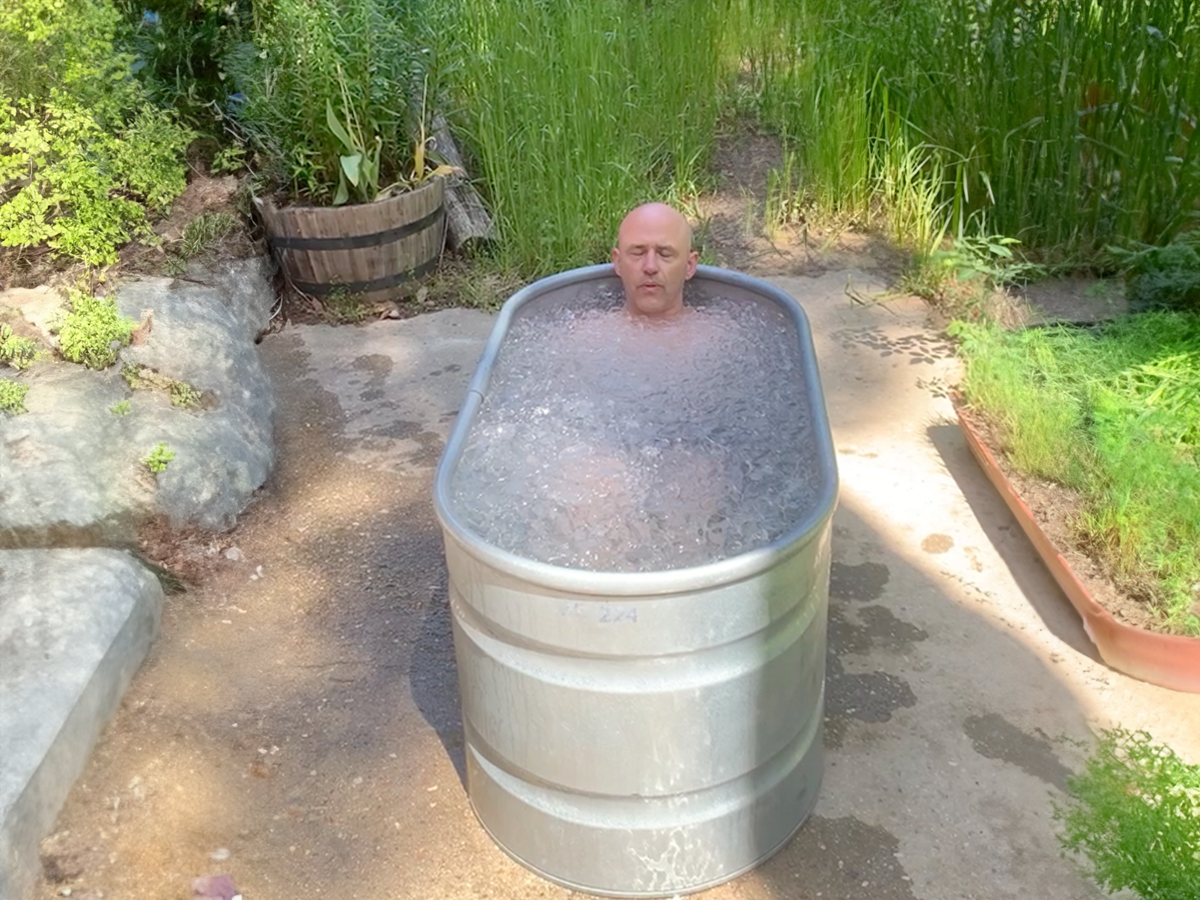
I Train in the Ice Water to Make Me More Stress Resilient
You might wonder why I would subject myself to what may seem like a painfully uncomfortable experience. First and foremost, I didn’t just jump into the ice bath without preparation. I spent months building up to it by incorporating daily Wim Hof breathwork, cold showers, and outdoor exercise in cold weather. Even with this preparation, my first ice bath was overwhelming. However, over time, as Wim Hof promised, the experience transformed. Beyond the initial discomfort, I now feel a profound sense of peace that is difficult to put into words. It’s as if the chatter in my mind shuts off, replaced by soothing tranquility. My body relaxes, and a deep calm sets in.
Moreover, I have discovered that ice baths are the first practice that consistently relieves my chronic anxiety and depression. Whenever I feel off-balance, I can turn to an ice bath to reset my system and eliminate the angst from my body and mind. Additionally, these baths have increased my physical and mental energy, revitalizing me in ways I hadn’t experienced in years.
Building Resilience: Modifying Stress Responses through Gradual Exposure
Fundamentally, the Wim Hof Method aligns with exposure therapy, a widely recognized technique for building tolerance to experiences that trigger dysregulation. Dysregulation is a driving force behind most chronic illnesses. By consistently practicing exposure therapy, you can rewire your unconscious responses. My cold tolerance has dramatically changed, even though the sensation signals to my unconscious are no different from when I took my first ice bath.
My subconscious interpretation of the cold has shifted through training and practice from perceiving it as dangerous to recognizing it as something beneficial. Additionally, the cold exposure strengthens my body because the sudden temperature change is an adaptation exercise. Whenever I do an ice bath sequence, I do body adaption “push-ups,” making my nervous and immune systems more resilient and responsive. The Wim Hof method is a form of mindful practice similar to meditation. The more you do it, the less you are ruled by your impulses, and the more you can pause before reacting to a typical stress trigger. As a result, on average, I have become less sensitive to my historical stress triggers. I am also more capable of stopping destructive self-soothing behaviors like overeating, binge-watching action movies to avoid sleep, and over-exercising. Most importantly, my life has expanded rather than shrunk. I feel a sense of solidity for the first time in many years.
While we’ve highlighted that Nervous System Dysregulation can underpin chronic pain and illness, it’s crucial to understand that this is one piece of a larger, more complex puzzle. Chronic conditions often stem from an interplay of elements – from our genes and the environment to our lifestyle habits. Acknowledging this multifaceted landscape is key. It’s not about homing in on a single culprit but rather understanding the intricate web of influences that contribute to our health. By weaving in practices that tackle these various factors, including Nervous System Dysregulation, we can build resilience, better manage our condition, and move toward a more vibrant state of health.
Navigating Your Healing Path: Principles and Guidelines:
Several elements must be in place for practices like the Wim Hof method to support your healing:
You must be willing to do a practice, not forced. If you go into an ice bath because of coercion (social pressure) or because you decided in your head that you should, but in your gut, you don’t want to, it will be a negative experience that could increase your pain/make you sicker. This principle is true for any self-care program you take on, regardless of how popular or touted it is, i.e., meditation, yoga, special diets, or talk therapy.
Listening to Your Body Sensations: Your bodily sensations in response to an activity often provide valuable insight into whether a self-care practice is right for you. This concept may seem unconventional to those who view logic as the only reliable guide to decision-making, but recent advancements in neuroscience suggest otherwise. It highlights the importance of a combined approach: using both the awareness of body sensations and rational thought. To utilize this approach, try to sense your body’s readiness or resistance to a particular practice, then cross-reference this with your logical understanding. If your body responds with intense sensations like tensing up, withdrawing, or feeling aggression, it’s likely signaling that the activity may be too stressful or inappropriate for your current state. In such instances, pushing forward might be counterproductive.
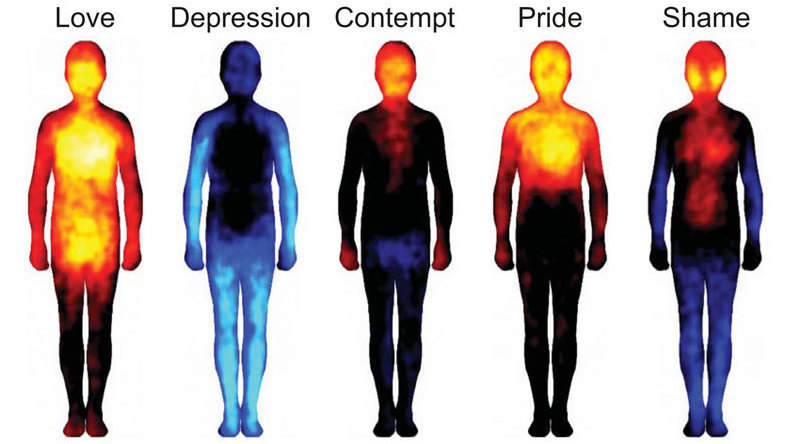
Body Sensation Maps of Emotions, Source: BSMs, Nummenmaa et al., 2014
Surf your growing edge. This concept involves skillfully navigating the delicate balance of expanding your comfort zone without overwhelming yourself. The key lies in incrementally pushing your limits. Take my initial journey with the Wim Hof training, for instance. I began with cold showers of a mere 10 seconds, then gradually built up to 10-minute showers before finally introducing ice baths into my routine. This three-month process reflected the principle of ‘surfing my growing edge.’ Even now, when faced with the ice bath, my natural impulse is to retreat. Yet, using Wim Hof’s breathing exercises and techniques, I soothe my system and calmly enter the icy water. This practice, over time, has significantly broadened my stress tolerance. And it’s not exclusive to extreme cold exposure; this concept can apply to various self-improvement practices like meditation, dietary changes, or yoga. The aim is to consistently challenge yourself while preventing overwhelm. It’s a dance between your ambition to progress and your mindfulness of your current state, a balance between too much challenge and too little. The mantra of ‘surfing your growing edge’ is about harmoniously pushing your boundaries while honoring your present capacities. Whether you’re embarking on a physical fitness journey, building emotional resilience, pursuing intellectual endeavors, or exploring creative exploits, this principle serves as a guide to sustainable growth.
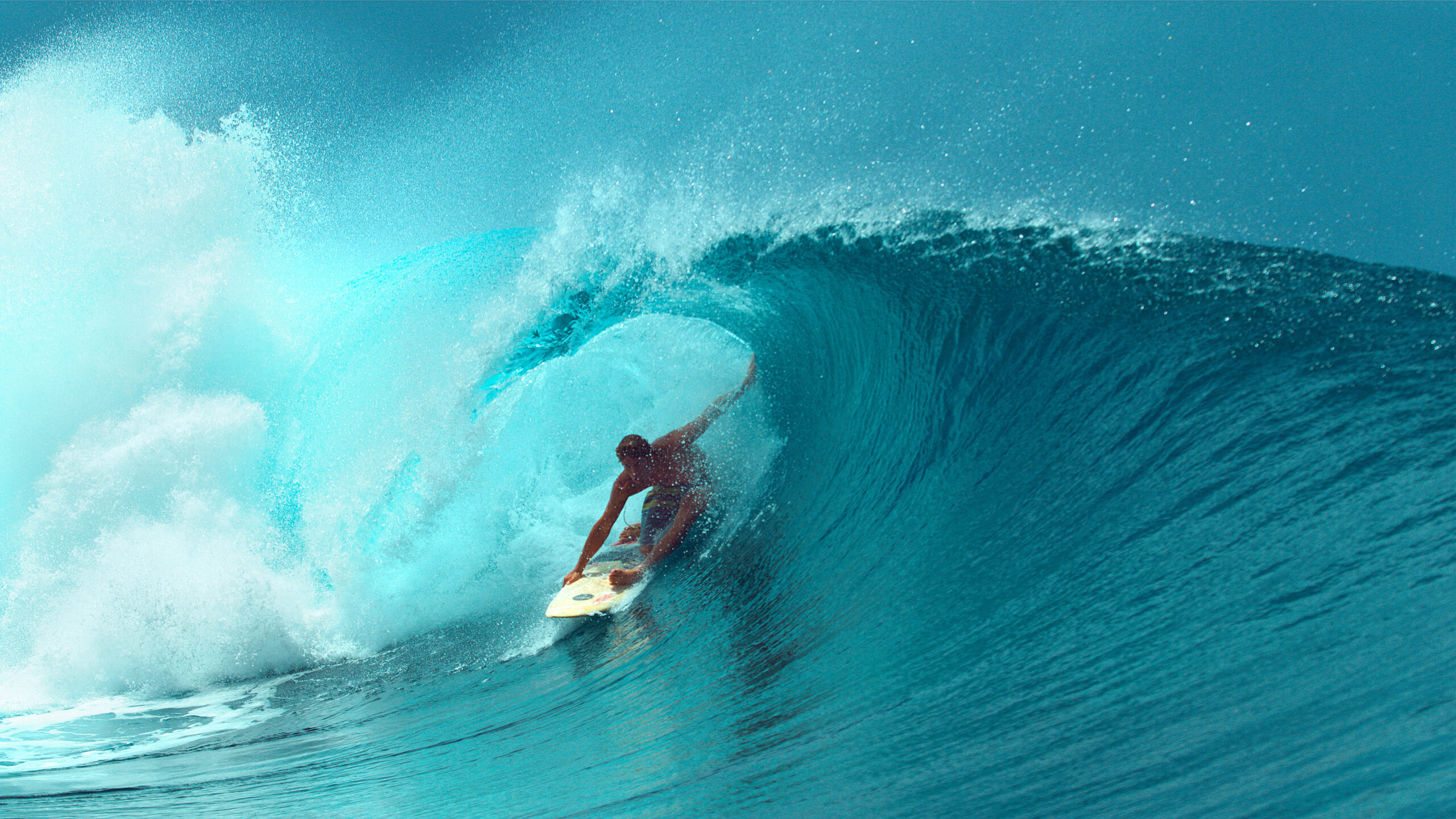
Surf The Line Between too Much and too Little Effort to Expand Your Stress Tolerance
Make sure your actions are congruent with your core beliefs. Ensuring that your actions are congruent with your core beliefs is a cornerstone of well-being. My experience with individuals suffering from chronic pain has taught me that many are often disconnected from their core values. This form of self-abandonment typically stems from an excessive focus on external expectations and others’ needs, leaving their own neglected. This neglect often manifests as chronic stress, which in turn contributes significantly to persistent pain and numerous stress-related diseases.
The remedy to this self-abandonment is a commitment to balancing your passions, inherent talents, sense of right and wrong, and the desire to contribute to the world’s greater good. Striving for this equilibrium can lead to a more meaningful existence and personal satisfaction.
Stress-coping habits such as overconsumption of alcohol, overeating, or even the abandonment of our needs for others, offer only superficial comfort and come with a steep price. In contrast, dedicating yourself to a higher purpose allows us to grapple with the complexities of aligning our decisions with multiple considerations. This approach may be more challenging than succumbing to quick fixes or fleeting pleasures, but it holds a more substantial potential for relief from pain and suffering.
So how do you initiate this practice? Start with what bothers you the most – be it your habits or your circumstances. If financial instability keeps you awake at night, start there. If you’re grappling with declining health, consider asking a friend or partner to join you on daily walks. This small shift in your daily routine can bolster both physical health and social connections, putting you on the path toward a better future.
Another crucial step in this journey could be reassessing your value system. Sometimes, our values can lead us to decisions that don’t serve us well. For instance, an overemphasis on personal freedom may obscure the fulfillment found in considering others’ needs. Or, valuing hard work to an extreme might lead to neglecting family, personal health, or friends, resulting in burnout and loneliness.
The path to better health and reduced suffering starts with honesty – with yourself and others. You might not have the complete picture or know precisely where to start, but you are likely aware of aspects of your life that are out of sync with your beliefs. Confronting these issues with honesty can halt the cycle of pain and suffering. For some, this may mean accepting the need to mature and cease expecting the world to cater to your whims. For others, particularly those who feel taken advantage of, it may be time to assert yourself and demand better treatment. Making these adjustments can profoundly impact your health.
There is no difference between psychological and physical health. Many programs will state that you have to change your mind if you want to change your life, and even though there is some merit to this view, for people with chronic pain and illness, it’s typically an empty promise. Instead, what needs adjusting is your body’s resilience in the face of challenge. The new neuroscience model shows us that people often can’t feel good because their bodies and nervous system are weak from poor nutrition, disrupted sleep, viral infections, bacterial infection, a lack of physical conditioning, or a traumatic shock like unhealthy development in childhood. If your body lacks resilience and is sick and weak, it will more easily be threatened (dysregulated) by life’s challenges.
Chronic Illness: A Lack of Nervous System Durability
If you suffer from chronic health issues, it is likely that your nervous system lacks resilience. But there is hope. By choosing to engage in practices that gradually expand your capacity to handle stress, such as the Wim Hof Method, you can build up your resilience over time. As your capacity for digesting stress increases, you will notice a remarkable expansion in your overall stress tolerance.
It’s important to note that the Wim Hof Method is not the only approach to enhancing resilience. In future articles, we will explore other practices that can contribute to your healing journey. These may include therapeutic play, co-regulation, pranayama breathwork, mindfulness meditation, mindful yoga, and more. By incorporating these practices into your daily life, you can harness the insights of modern neuroscience to overcome chronic pain and illness and optimize your health.
Here’s a Summary of What We’ve Learned in Part 2:
1. New findings in neuroscience help us better understand and deal with pain and enhance vitality.
2. Capitalize on the power of incremental training. It’s an effective tool that can adapt our unconscious sensory system, fostering our overall health and well-being.
3. Choose practices that resonate with you; the Wim Hof Method is just one example of a self-care practice that can promote healing and resilience.
4. Other practices, such as therapeutic play, breathwork, and meditation, are additional examples of practices that contribute to healing and well-being.
Follow Self-Care Guidelines:
1. Willingness: Ensure genuine readiness in undertaking self-care practices instead of acting out of coercion or social pressure
2. Listen to Your Body: Pay attention to bodily sensations in response to activities and combine this awareness with rational thought to decide if a self-care practice is right for you.
3. Surf Your Growing Edge: Gradually expand your comfort zone by incrementally pushing your limits without causing overwhelm, applicable across various self-improvement practices.
4. Foster Congruence and Self-Understanding: Strive for congruence between actions and core beliefs, reassess values to guide decisions, start with small changes in areas causing the most discomfort, and practice honesty with yourself and others to identify areas of discord.
5. Physical Resilience: Focus on strengthening physical resilience to handle life’s challenges, recognizing the intertwined nature of physical and mental health.
Thank you for joining me on this journey toward vitality and well-being guided by the principles of modern neuroscience. Stay tuned for my series’ third and final installment, where we will review all the salient points covered in Parts 1 and 2. I will provide a comprehensive summary of the insights gained from the new understanding of pain and offer additional strategies for achieving lasting relief from chronic pain and illness.
In Health,
Michael
Check out these videos based on the current scientific guidelines to retune your unconscious responses to stress.
